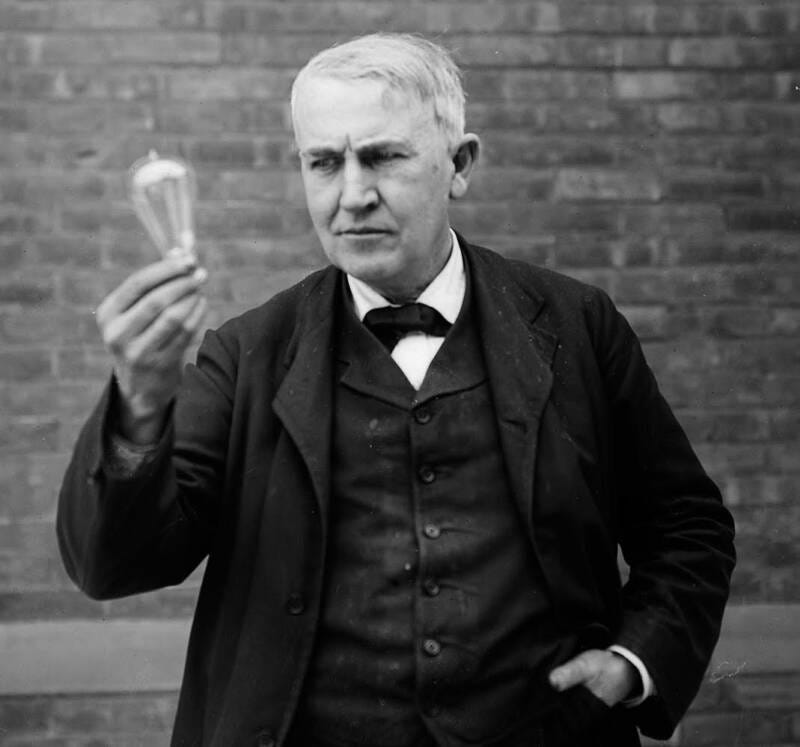A lot of unscientific nonsense
I find it difficult to imagine that I am actually hearing real voices from people not of this planet.
“We don’t know one millionth of one per cent, about anything!” the great inventor enthusiastically confessed. “Why, we don’t even know what water is. We don’t know what light is. We don’t know what gravitation is. We don’t know what enables us to keep our feet, to stand up. We don’t know what electricity is. We don’t know what heat is. We don’t know anything about magnetism. We have a lot of hypotheses, but that is all. We are just emerging from the chimpanzee state mentally.”
Such humility was mere prelude, of course. Thomas Edison had a bombshell – one designed to test the limits of his own knowledge and intellectual prejudices. He’d long wanted no part of the growing Spiritualist movement that had gripped his contemporaries in the United States and Europe. It was a stance he’d reconfirm in the same America Magazine article, calling the phenomenon, “a lot of unscientific nonsense.”
Edison singled out the mediums and their tools, adding that while some seemed, “sincere enough,” many or most were “simply fakers scheming to fool the public and line their own pockets.” But something had happened to him — or, more properly, something had happened to a rival.
Nikola Tesla’s first apparent contact with the dead had come some two decades prior at great elevation near the Colorado Rockies. A radio receiver designed to detect on-going storms had succeeded in generating white noise from lightning strikes. But another, stranger sound had attached itself to the transmissions, one of “possibly of incalculable consequences to mankind,” per the inventor.
“My first observations positively terrified me, as there was present in them something mysterious, not to say supernatural, and I was alone in my laboratory at night;” Tesla told Collier’s, “but at that time the idea of these disturbances being intelligently controlled signals did not yet present itself to me.”
In the years leading up to the first voice transmissions by Reginald Fessenden and Guglielmo Marconi, it wasn’t entirely clear what Tesla might have backed into. But the inventor had other fish to fry over the intervening decades, and those incalculable consequences would have to wait another 20 years.
"The sounds I am listening to every night at first appear to be human voices conversing back and forth in a language I cannot understand,” Telsa wrote in his diary of a new invention. Though this time, he opted to embrace a more pragmatic approach, adding, “I find it difficult to imagine that I am actually hearing real voices from people not of this planet. There must be a more simple explanation that has so far eluded me.”
Concerned that Tesla might beat him to a piece of technology that would force a fundamental reexamination of life and death, Edison threw himself into the pursuit. He’d developed his own theories on the matter. Uncertain what ultimately separated the living from the dead, the inventor put forth the notion of “life units” in the American Magazine piece. What if, he posited, clusters of the tiny, imperceptible pieces of life existed beyond an individual’s death?
It was here Edison finally revealed his work, in part,
I have been at work for some time building an apparatus to see if it is possible for personalities which have left this earth to communicate with us. If this is ever accomplished it will be accomplished, not by any occult, mystifying, mysterious, or weird means, such as are employed by so-called ‘mediums,’ but by scientific methods. If what we call personality exists after death, and that personality is anxious to communicate with us who are still in the flesh on this earth, there are two or three kinds of apparatus which should make communication very easy.
Edison believed himself to be three months from completion of the device at the time of the interview. That winter, he gathered group of scientists and spiritualists to his lab in Menlo Park, New Jersey. He fired up a machine that whirred as it shot light at a photovoltaic cell. On a fundamental level, it wasn’t dissimilar from a film projector, including the Kinetoscope produce by Edison’s company. The inventor informed the crowd that the concentrated light beam would register even the slightest disturbance – though precisely what disturbance they had gathered to witness wasn’t entirely clear.
Eyes fixed on a meter aimed at measuring changes to the beam, as the mediums engaged in a séance. After hours of staring at a stationary needle, scientists and mediums alike agreed that the evening had been fruitless. It was only Edison who left the evening with an unshaken resolve.
He had previously made a pact with engineer William Walter Dinwiddie that whichever man outlived the other would attempt to contact his friend beyond the grave. Dinwiddie died the same year as science séance, and by the time Edison passed 11 years later, he’d seemingly made no tangible progress on his invention. He may have, however, made contact with the other side nonetheless.
As he lie on his death bed, Edison reportedly woke briefly from a coma to utter the words, “It is very beautiful over there."
Sources:
To Communicate With the Other World https://archive.macleans.ca/article/1920/10/15/to-communicate-with-other-world
Edison vs. Tesla The Battle over Their Last Invention by Joel Martin and William J. Birnes
When Thomas Edison Tried Besting Nikola Tesla by Building a "Spirit Phone" https://www.mentalfloss.com/article/602456/thomas-edison-nikola-tesla-spirit-phone



